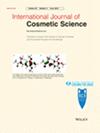Assessing residual fragrances on skin after body washing: Optimization of an analytical method using solid-phase microextraction coupled with gas chromatography–mass spectrometry
Abstract
Objective
The aim of this study is to develop and optimize a method for evaluating the persistence of residual fragrance after body washing, addressing a significant requirement in the development of personal care products. The main objective is to establish a reliable, sensitive and reproducible analytical technique to assess fragrance longevity on skin post-use of body wash products.
Methods
Headspace solid-phase microextraction (HS-SPME) coupled with gas chromatography–mass spectrometry (GC–MS) is used to analyse residual fragrances. We investigate the extraction efficiencies of various SPME fibres and compare different methods for sampling skin-emitted fragrances, including tape stripping and sealed glass funnels. A controlled body-washing procedure is implemented to standardize the cleansing process.
Results
Our findings indicate that the relative standard deviation for measuring five distinct fragrances is within the range of 3%–14%, highlighting the precision of the method. A notable variance exists in the extraction efficiency of fragrances using different types of SPME fibres, with some exhibiting over a threefold difference. Furthermore, the glass funnel method for fragrance collection demonstrates an 11.7 times greater sensitivity to galaxolide than that of the tape-stripping method. Residual fragrances with base notes as the main components can be detected on the skin up to 24 h after body washing.
Conclusion
The optimized method for residual fragrance evaluation developed in this study offers a robust tool for analysing fragrance components persisting on the skin for up to 24 h post-wash. This advancement facilitates a deeper understanding of fragrance longevity in personal care products, enabling comparative analyses between different products.

 求助内容:
求助内容: 应助结果提醒方式:
应助结果提醒方式:


